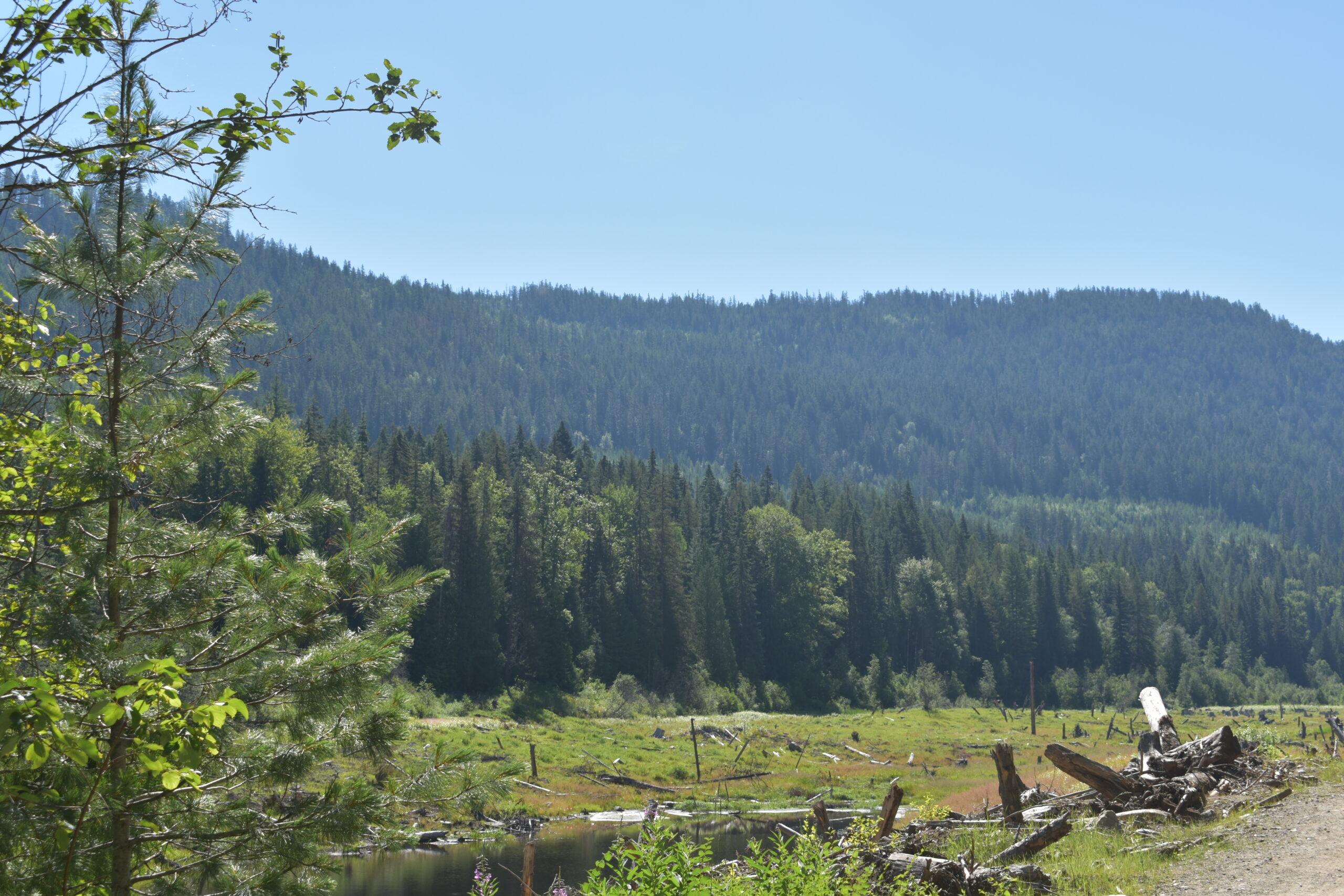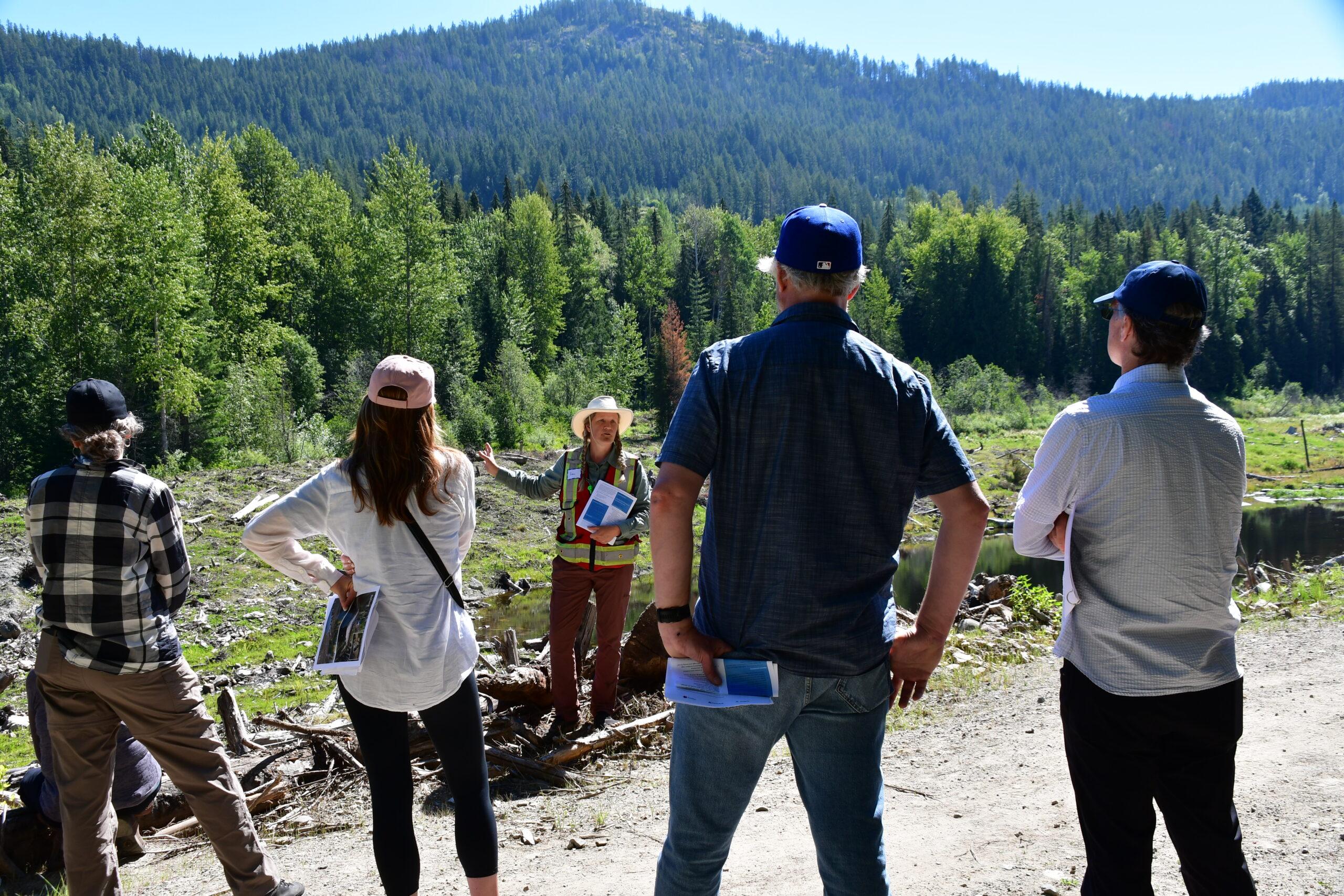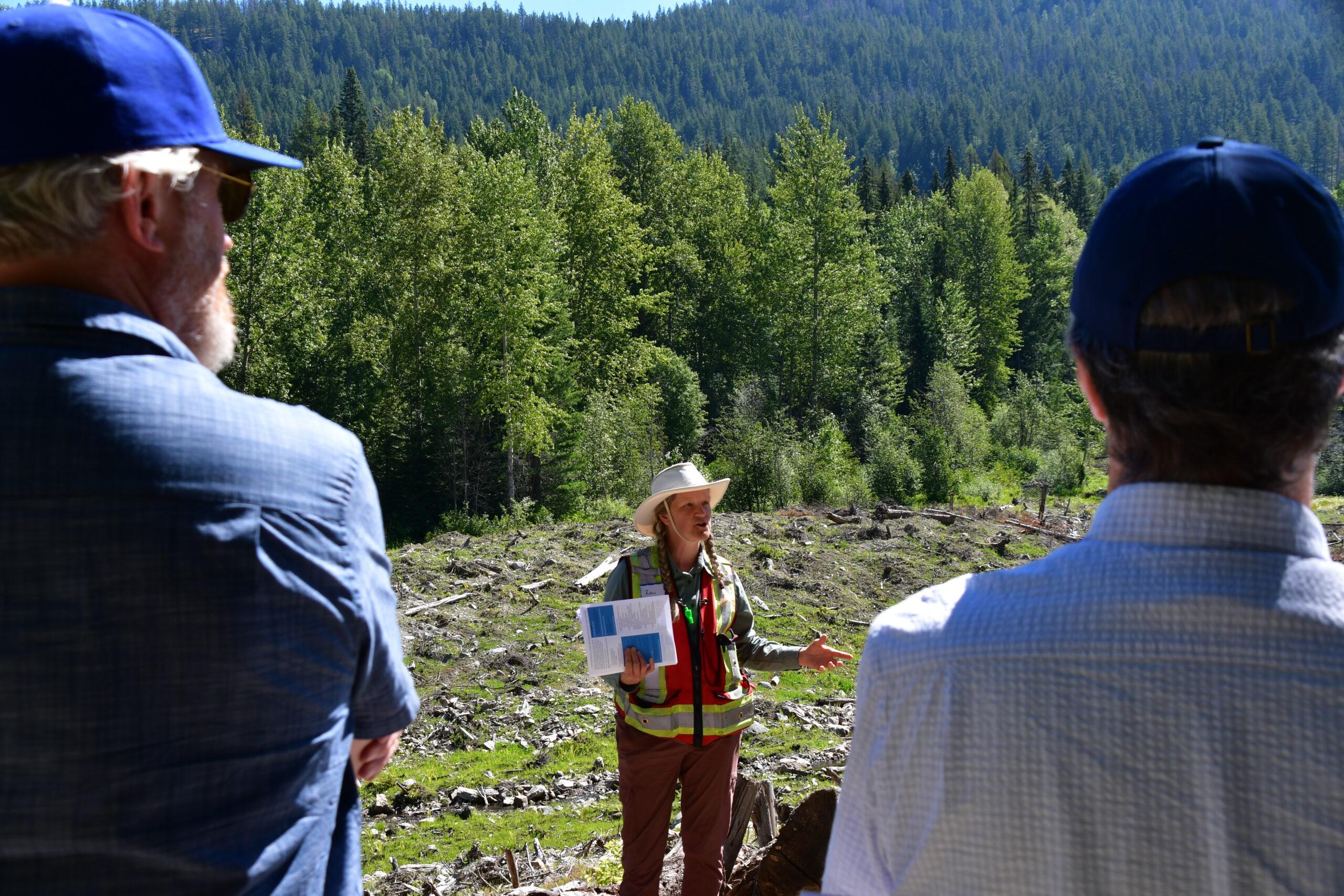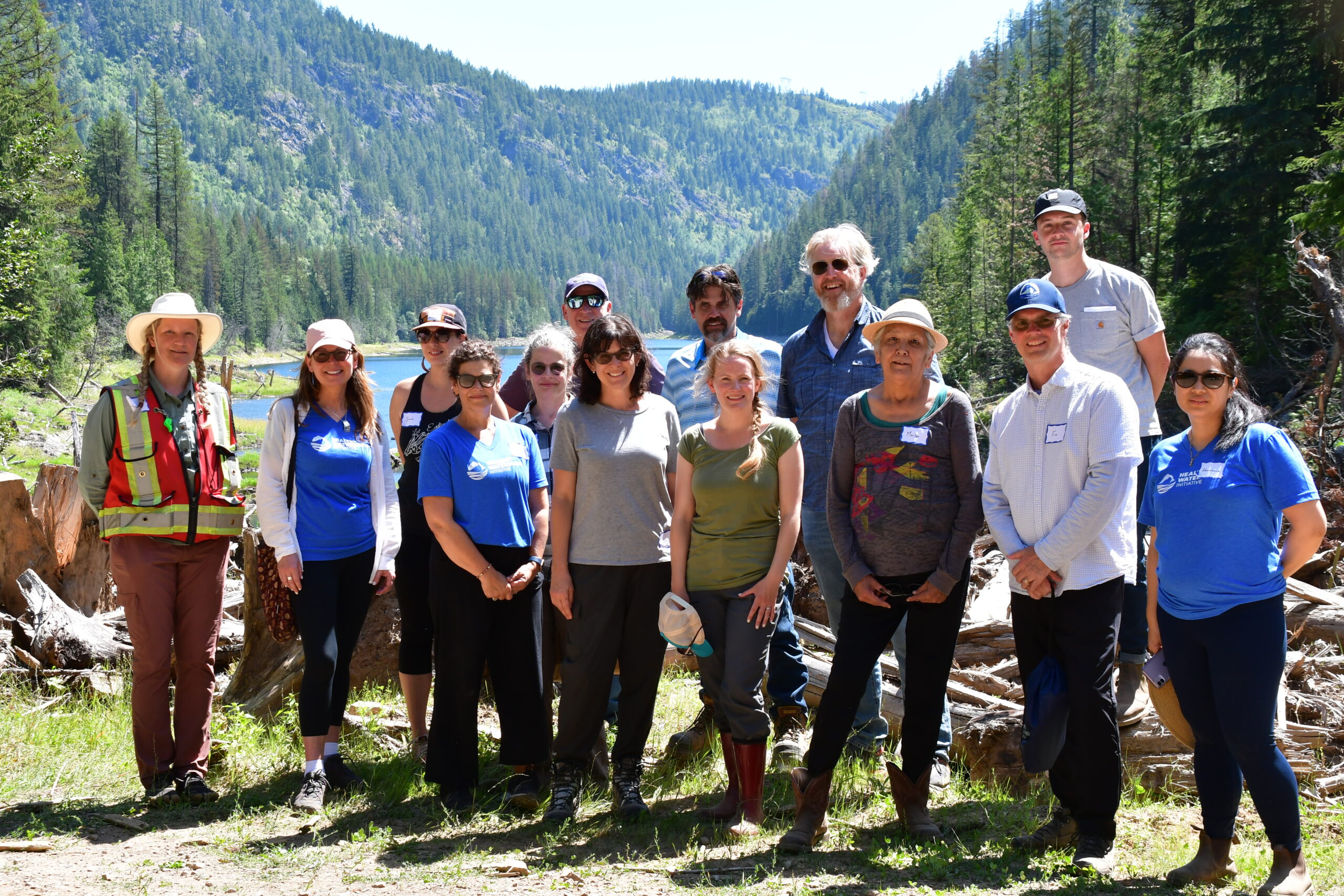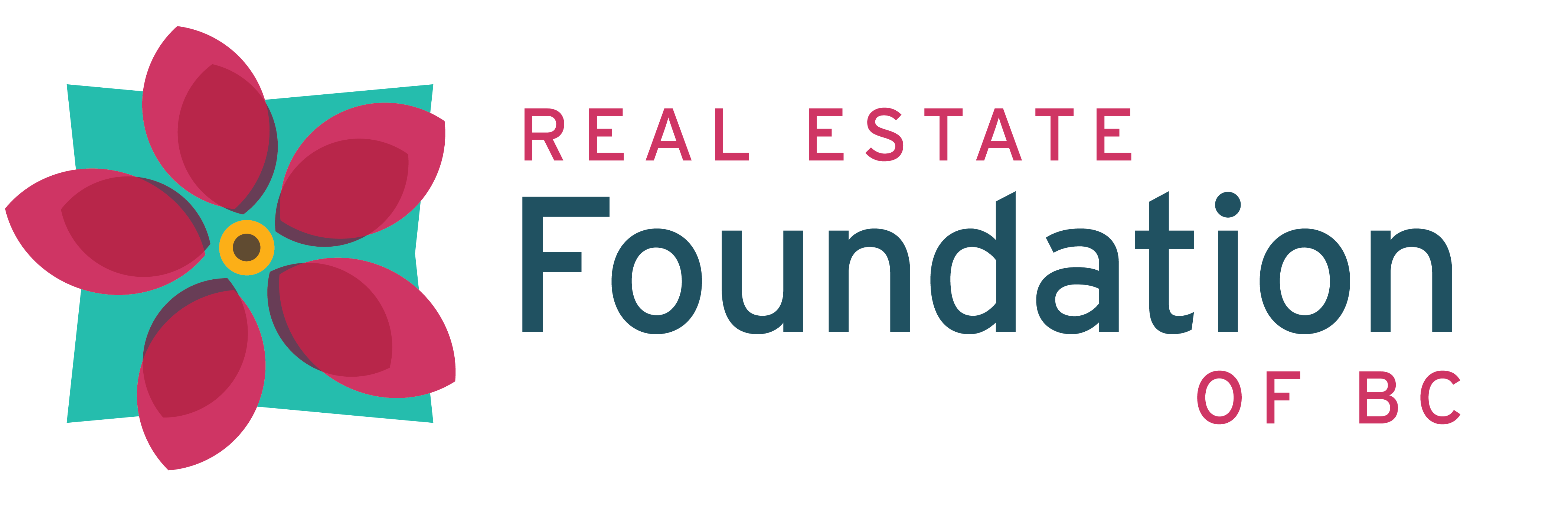From Reservoir Basin to Thriving Wetland; Cambridge Creek and Violin Lake Ecosystem Restoration Project
Cambridge Creek pools and flows down from the pristine waters of Violin Lake, meandering through newly restored wetlands before joining the vast Columbia River near Trail, B.C., in the West Kootenays. The creek is in the southwestern part of Canada’s Columbia Basin on the unceded territory of a dozen First Nations and Nation Councils. The water’s path recognizes no national borders and has connected Indigenous communities since long before the United States and Canada became separate countries.
When colonial settlers arrived in the region in the early 1900s, they dammed Cambridge Creek for processing the area’s abundant Western Hemlock, cedar, pine and fir. The Cambridge Creek and Violin Lake systems were further dammed into reservoirs that supplied drinking water to Trail until 1994.
Today, the obsolete dams have been removed, two streams are restored, and a newly created 16-acre wetland is beginning to thrive.
On a recent HWI tour of the Cambridge Creek and Violin Lake wetlands, the project received a blessing from Autonomous Sinixt Matriarch Marilyn James for the return of the waterway to its natural state. She said, “The hand of man messed it up, and the hand of man will restore this place.” Marilyn acknowledged the positive impact of restoration work and the need to “understand and educate people about the importance of this land and this water.”
Project Design and Construction Process
The City of Trail began planning to remove dam infrastructure and restore the wetland ecosystem in 2019. As one of the first dams removed under the new BC Dam Safety Regulations, the process was complex, requiring 11 different permits. Fortunately, covid-relief funding for watershed work in 2021 enabled the site to be transformed from a high-consequence man-made infrastructure to a resilient natural ecosystem.
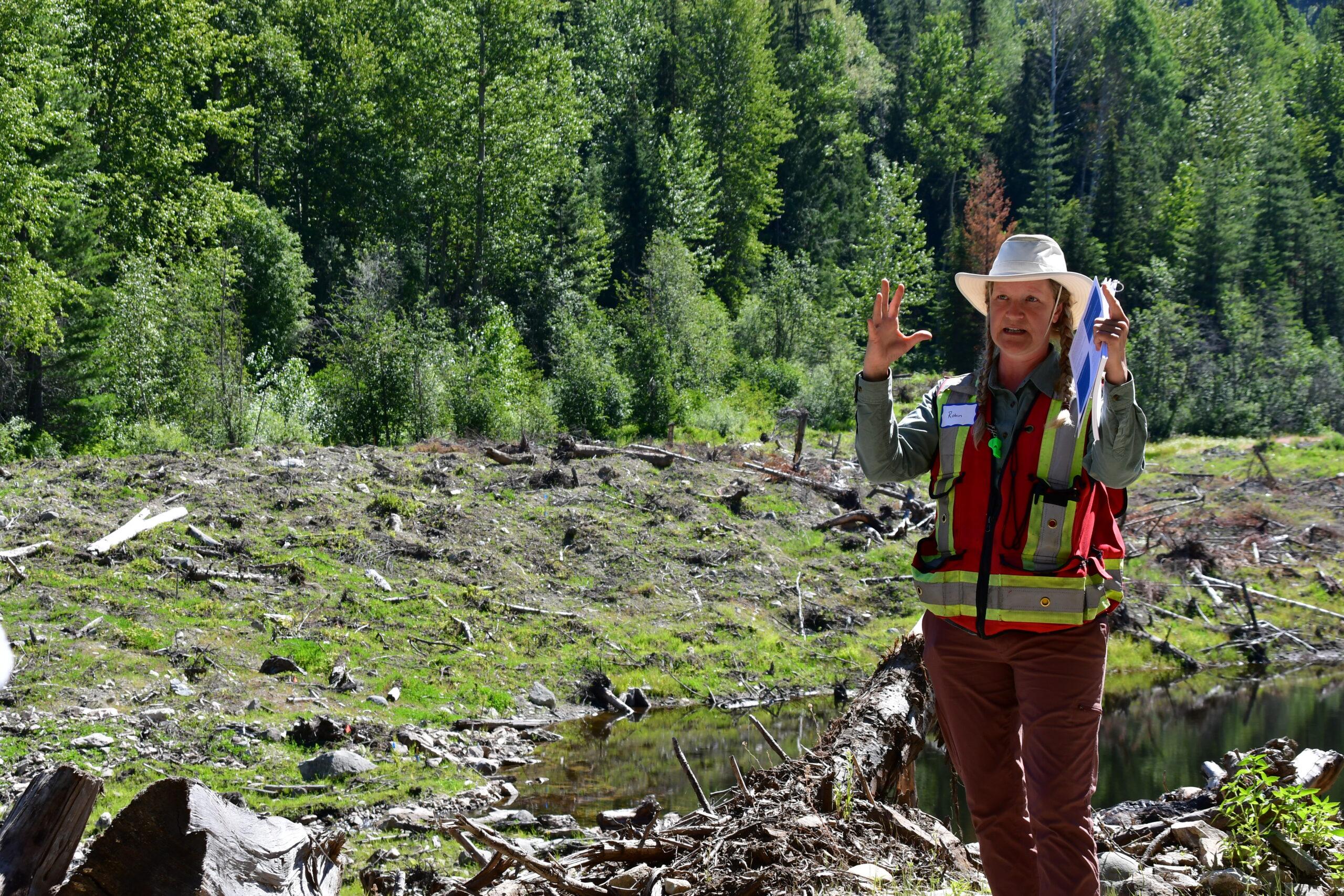
Ecosystems are dynamic communities of plants, animals, and microorganisms interacting with their physical environment as a functional unit with the natural capacity to adapt to climate change impacts, natural disasters or extreme weather events. Construction was planned, scheduled and modified to avoid and minimize any impacts on toad breeding sites. Environmental monitors worked closely with equipment during construction. Along with the removal of four dams and their associated structures, 3,400 metres of steep gravel roads were restored to natural conditions.
The wetland’s site design used erosion control techniques such as vertical grade control, digging a trench across the floodplain and placing a bed of rock across it to act as a stream bed lock that cannot be moved by water. The restoration goals were to restore the wetland’s natural stability and groundwater elevation so soils become saturated, a productive place for trees and vegetation to grow and a habitat where wildlife thrive. Woody debris was brought in from local sources and placed around the wetland to create perches and snags for birds and bats, as well as shaded areas to help with the natural regeneration of vegetation. The debris has been diverted from slash piles and used to deter off-road vehicle traffic in the wetland while creating safe habitat and breeding grounds. In addition, restoration crews made bear dens and snake shelters using salvaged concrete from the decommissioned dam.
Creating Wildlife Habitat
Restoration of the wetland consists of erosion control and plant growth and, ultimately, an improved wildlife habitat. The project team removed invasive species of vegetation, installed grade control at high-risk areas of erosion and planted up to 20 native species. Improved biodiversity has attracted endangered Western toads back to the site.
Beavers are being welcomed back as natural wetland managers. Wetland and stream restoration specialist Robin Annschild showed tour participants a repaired beaver den. She noted that beavers had managed wetlands successfully for thousands of years. “In looking at historical aerials of open water on the landscape in Alberta, we have learned that the prime regulator of open surface water is not rain, but the presence or absence of beavers.”
Since scientists expect surface water to be reduced by 50 percent in North America because of climate change, inviting beavers to resume their wetland management role will help the site adapt to intense drought and flood conditions. Robin said they have made sure that the beaver’s favourite foods, high protein aspen and cottonwood, are available to help them thrive.

Habitat has been created for several Species At-Risk, such as the Western toad, Great blue heron and Grizzly bear. In addition, migration corridors have improved connectivity and foraging opportunities for large mammals like moose, deer, bear and beaver. The project team monitored the wetland closely during the 2022 spring freshet, concerned that freshly planted, seeded, and live-staked vegetation is most at risk from water erosion before it gets fully established. However, Robin Annschild was thankful that the spring freshet this year was moderate enough to test the natural stability of the stream channel while not enough to damage the new streams and plantings. The biologist was also pleased to find Western toads breeding in the restored Cambridge Creek and Violin Lake wetlands once again.
Acknowledgements
The following nations and national councils are in the consultative areas database for the project: Autonomous Sinixt, Upper Nicola Band, Lower Similkameen Indian Band, Okanagan Indian Band, Splats’in First Nation, Shuswap Indian Band, Lake Tribe (Sinixt), Penticton Indian Band, Osoyoos Indian Band, Okanagan Nation Alliance, Qwelminte Secwepemc, Ktunaxa Nation Council
Project Partners and Contractors
City of Trail, B.C. Wildlife Federation, Rewilding Water & Earth Inc., Wetland Restoration & Training LLC, Wayne McCrory, RPBio, Sublatus Environmental, McElhanney Ltd., SNC Lavalin, Rossland Society for Environmental Action
Funders
Healthy Watersheds Initiative, Investing in Canada Infrastructure Program, City of Trail
Author Bio: Claudia Ferris has the privilege of helping to tell the stories of the people caring for the province's vital wetlands and watersheds. Claudia supports communications for the Watershed Security Coalition, Healthy Watersheds Initiative, B.C. Wildlife Federation and the Lower Fraser Collaborative Table from her home on the unceded territory of the hən̓q̓əmin̓əm̓ and Sḵwx̱wú7mesh speaking peoples, the xʷməθkʷəy̓əm (Musqueam), Sḵwx̱wú7mesh (Squamish), and səlilwətaɬ (Tsleil-Waututh) Nations.



